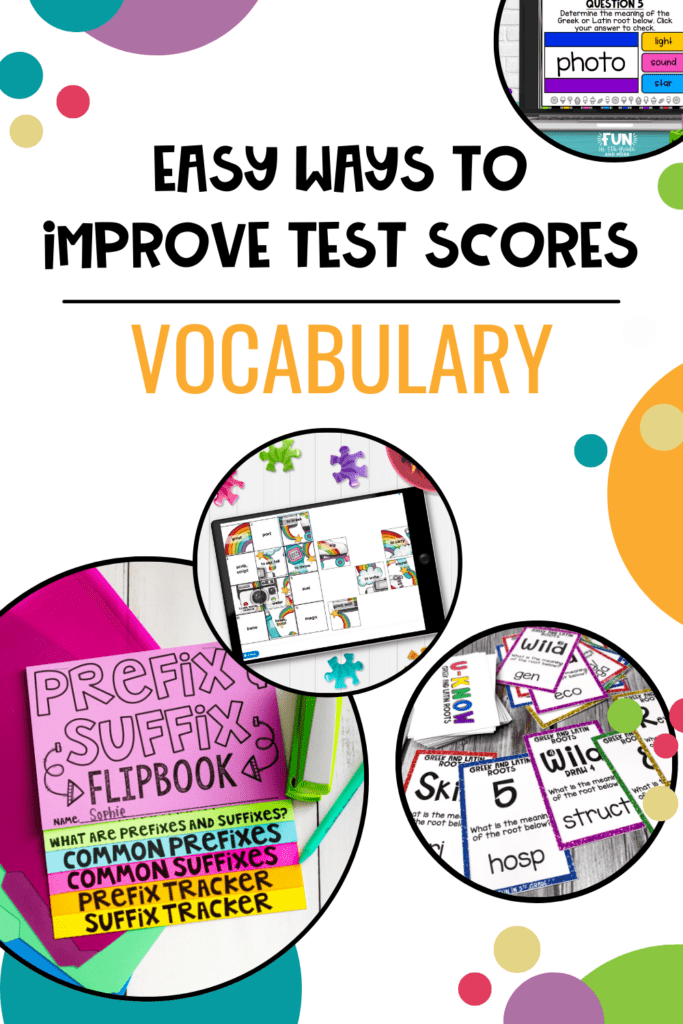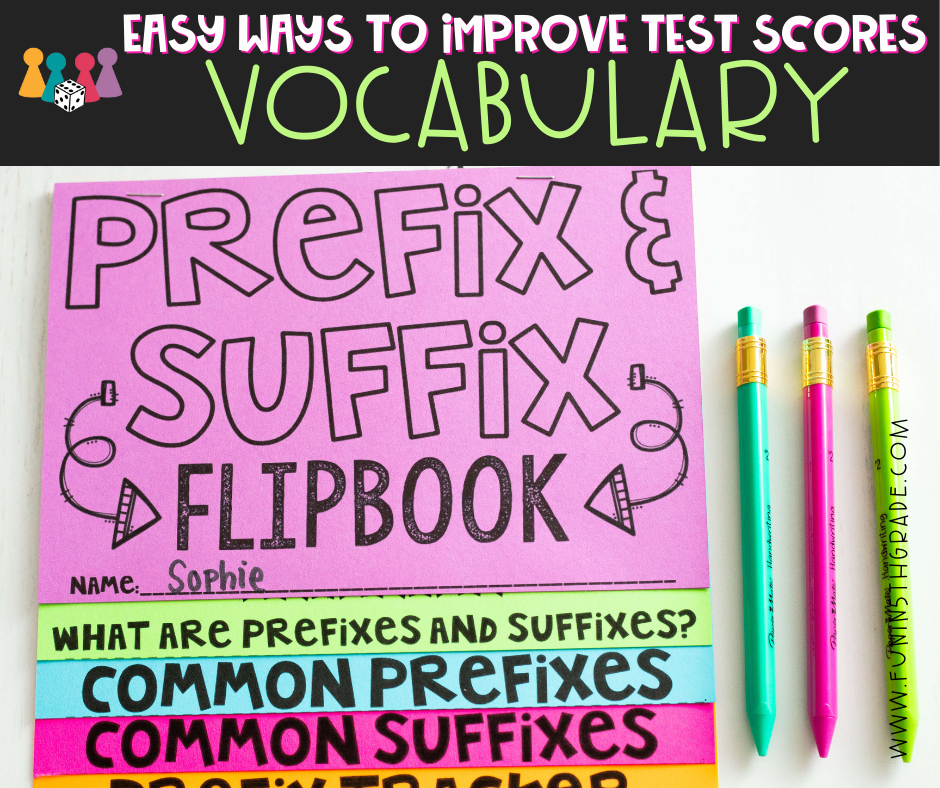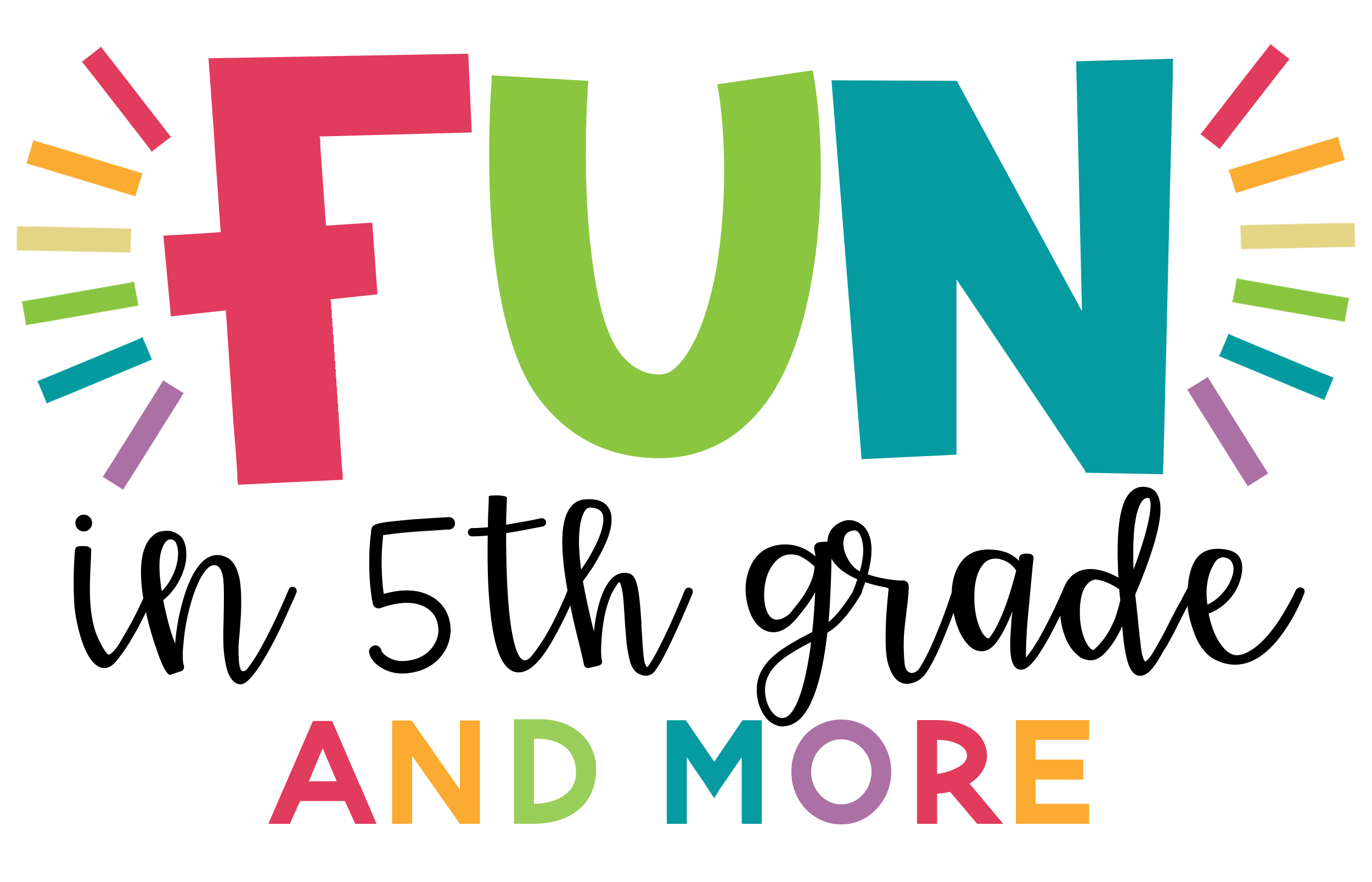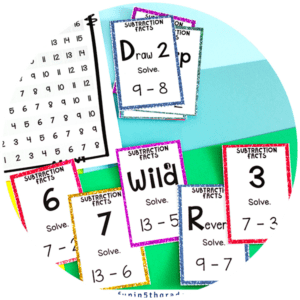One of the easy ways to improve test scores is to work on student vocabulary. This post provides a few resource suggestions as well as some ideas for improving vocabulary instruction in your upper elementary classroom.
Unfortunately testing is not going away any time soon, so teachers everywhere are trying to figure out if there are any easy ways to improve test scores…luckily….there are.
One of the easy ways to improve test scores is to work on improving student vocabulary and thus improving a student’s reading comprehension.
The correlation between vocabulary and testing
Knowing how to read is both important to lifelong learning but also an important component of testing.
Many tests require students to not just explicitly answer questions about vocabulary terms, but students are also expected to be able to read and comprehend test questions, deduce meaning from context clues, and generally understand what is being asked of them.
Clearly, reading is important (shocker, right?!?)
So, how do we teach this skill in a truly helpful, manageable, and memorable way for our young students?
One of the many strategies that are popular among teachers for helping young readers or second language learners with vocabulary is by explicitly teaching word parts.
Word parts have long been a part of vocabulary instruction, with the method linking back to studies from the 1980s and 90s.
In Robert Marzano’s book, Building Background Knowledge for Academic Achievement: Research on What Works in Schools, he references a few of these different studies as he discusses the frequency of certain word parts in the English language and acknowledges the usefulness of learning some of the more frequently used affixes and roots. By learning a single word part, a student is learning a single part of many different words. In the same book, he also uses a series of studies to warn against simply teaching long lists of affixes, instead suggesting that teachers focus their efforts on the most commonly used roots, prefixes, and suffixes.

Teaching Affixes in the Modern Classroom
Since we know that learning common affixes and roots is a solid factor in improving vocabulary learning among new and developing readers (and one of the easy ways to improve test scores), I have been fine-tuning and experimenting with different methods of teaching affixes and roots in my classroom for many years, developing resources that would appeal to different learning styles and personality types.
Despite the many resources I’ve created on this topic, one of my most consistent strategies was using the Prefixes and Suffixes Flipbook. I loved using this flip book in class because students could use it throughout the unit as a handy reference, and it was an easy way to organize student notes.
The Prefix and Suffix Flipbook goes over all of the prefixes and suffixes I taught to my students, but it is also editable, so you can add your own prefixes and suffixes if you want to change them up. We have also created a list featuring some of the most commonly used affixes so you can share them with students or use them to create a word wall. Make sure to download those below!
While working on reading, we would frequently go back to the flipbook and word lists, and I would be very purposeful when we’d come across one of our affixes in class. We would stop, review the prefix or suffix and how it was being used, discuss its definition, and what we could figure out about the word using that word part as evidence. This focused and purposeful instruction later helped the students identify the same prefixes and suffixes on their own.
Once they had a prefix or suffix down, we would add it to the word wall, and as they added up throughout the year, we would begin playing games and doing in-class activities focused on reviewing and using the different affixes we had learned.
Prefix and Suffix Activities for Improving Vocabulary
When looking for easy ways to bring up test scores, ongoing vocabulary practice will continue to be important. As we’ve been discussing, working on word parts is a great way to improve vocabulary knowledge in new and beginning readers.
When picking games and activities for classroom work, we often try to pick and create activities that will work for a variety of contexts.
For independent work during centers or stations, we like to use no-prep activities like these Greek and Latin Roots Digital Puzzles. The puzzles require students to match root words with their definitions. Students can also use the puzzle design as support (as needed). Each puzzle is accessible on any device through a link, and they require no additional prep or instruction from the teacher…making them perfect for times when the teacher’s attention is needed elsewhere.
This Digital Candy Review Game focuses on prefixes and suffixes for small group or partner work. These games are self-checking and allow students to play board-game style, move pieces around a board, ask and answer questions, and review commonly used prefixes and suffixes.
Another fun game for small groups or early finishers is U-KNOW. We have many U-KNOW decks, but the ones that will work best for vocabulary instruction are the Greek and Latin Roots deck or the Context Clues deck.
Lastly, my favorite vocabulary activity for whole group (or small group) is the Context Clues Game Show. Students get to practice and review vocabulary while also competing against other teams of students. This is also a great method for formatively assessing students to decide whether further instruction is needed.

Easy Ways to Improve Test Scores: Vocabulary
Although testing is not what we want to think about, it is a realistic part of US classroom instruction and something we must consider.
If you are looking for easy ways to bring up test scores in upper elementary, start with explicit vocabulary instruction focused on word parts. With research linking back several decades, instruction on word parts is highly recommended and research-supported, and with so many great no-prep resources to choose from, it doesn’t have to be hard either.
For even more information about teaching word parts in upper elementary, check out this post: Decoding Vocabulary Words: Teaching Root Words, Prefixes, and Suffixes in Upper Elementary.
What are some other ways you teach word parts in your classroom? Do you have any favorite resources? Let us know in the comments!





